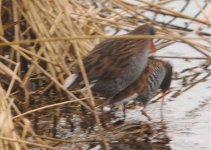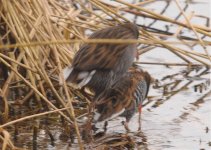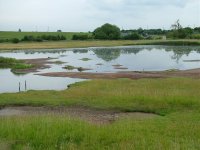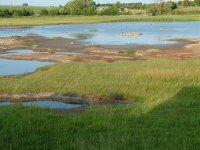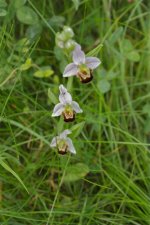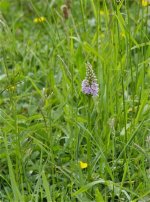midlands birder
Well-known member
Got the five summer plumaged Icelandic Blackwits on the Moors late morning. 1 Green Sandpiper and 1 Common Sand there too. A Nuthatch called from the barn conversion gardens.
On the flashes, my attention was drawn to the striking face pattern on one of the small dabbling ducks - I immediately thought Garganey! Not wanting to risk messing up the ID, I was cautious about putting news out and decided to scrutinise the bird further - obvious whitish supercillium, all-grey bill, white loral spot - eventually it flapped its wings - Bingo! - pale grey forewing and black/white speculum - an eclipse male Garganey. Andy Warr had joined me by this point and said, "hang on, I think I've got another" - a female duck that'd been asleep with its head in its back had woken up and showed a very similar head pattern - it was a female Garganey. Getting a pair at Upton today was particularly gratifying as they're the first for UW this year and it's a species that has been scarce in Worcestershire this year with only 2 or 3 reported this spring.
Other birds on the flashes included 1 Black-tailed Godwit, 5 Green Sands, 1 Common Sand and 2 Redshanks. A very rewarding visit.
well what can i say, a bit of dirty twitching had me get all these birds, but the garganeys were asleap for all but a minuite in our short stop at the flashes, the male flashed his forewing twice and the female just didnt wake up.
a HOBBY (adult) was seen on the moors, which flew into the eddy
and 4 teal (1 drk) at the flashes
MB




